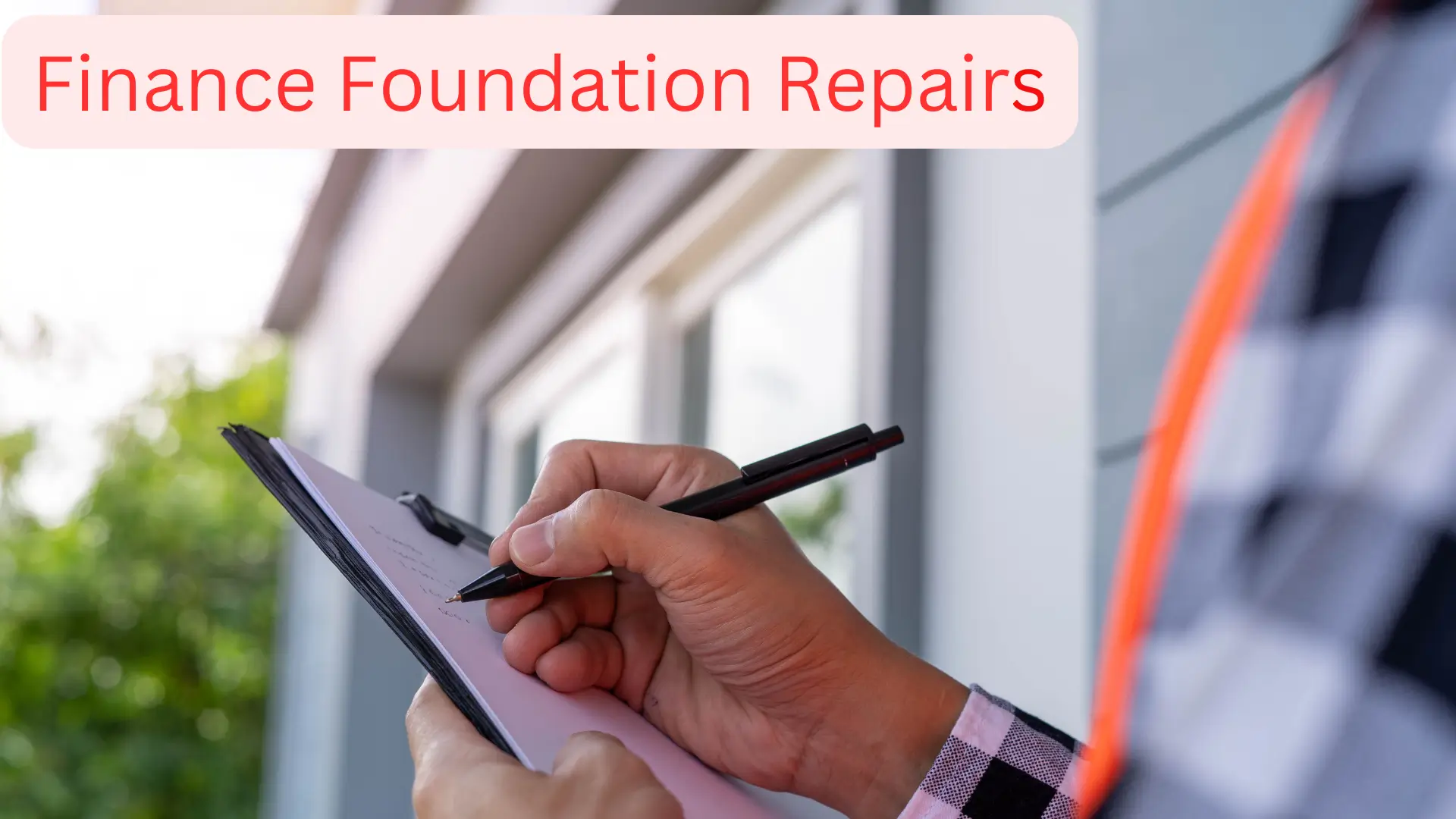How To Finance Foundation Repairs

Owning a home is a testament to stability and accomplishment, but when the very foundation supporting your dreams begins to show signs of wear, the financial implications can be daunting. This comprehensive guide endeavors to unravel the complexities of financing foundation repairs, placing a spotlight on the pivotal keyword, “finance foundation repair.”
In the following exploration, we will navigate through the nuances of timely interventions, the gamut of foundation issues, and the crucial role played by financial strategies in safeguarding your most significant investment – your home.
Understanding the landscape of foundation repairs involves dissecting the common causes of structural issues, recognizing the subtle signs of damage, and understanding the myriad repair options available. As we embark on this journey, the aim is not only to empower homeowners with knowledge but also to showcase diverse financing options, ensuring that the road to foundation repair is paved with financial confidence and security.
Even the most well-designed homes in our neighborhood may eventually experience foundation issues. Serious foundation issues can be very expensive and challenging to repair. They are typically brought on by expansive soils, differential settlement, seasonal weather variations, and/or inadequate drainage.
However, as these issues have the potential to seriously harm your home’s structure, resolving them is essential to maintaining its best possible condition.
Repairing a foundation can be costly, depending on the kind and degree of the damage.
Fixing serious damage, such as deep fractures or sinking sections of the foundation, can cost hundreds or even tens of thousands of dollars, although small repairs might only cost a few hundred dollars. There are a few financing options you could look into if you can’t afford to fix your foundation.
Even though having an emergency fund for home repairs is usually a good idea, you might not have enough cash on hand to cover a significant, unforeseen expense like foundation repairs. Fortunately, there are things you can do as a homeowner to help yourself because foundation issues cannot be disregarded.
7 Ways To Finance Foundation Repair
How To Finance Foundation Repairs
Examine these 7 financial foundation repair options that you can choose from.
- Payment Plans
- Third-Party Financing
- Financial Institution Loans
- Mortgage Refinancing
- Credit Cards
- Current Savings
- Savings Plan
Payment Plans
Payment plans are among the most popular methods of financing foundation repair projects. You can find out if your foundation repair firm takes monthly payments over a predetermined length of time if you are unable to pay the entire sum upfront.
Payment plans function as a short-term loan and are facilitated by a third party. Even “same as cash” loans, which let you repay the loan in installments without incurring interest, might be provided by certain third parties.
If you are unable to pay the entire amount upfront with a credit card, check, money order, or cash, Perma Pier Foundation Repair of Texas offers payment options via our partner Hearth Financing. Your financing option requires customization, just like your foundation does.
Third-Party Financing
Finance businesses collaborate with contractors to assist homeowners in obtaining financing for major home repairs. In essence, you are working with a loan company that specializes in construction or repair loans rather than a bank.
Hearth is one such business, but there might be others. You can apply for a loan through this third-party funding scheme if your contractor has a partnership with Hearth. Hearth provides the money up front for the repairs, and you are responsible for repaying them according to their terms without consulting the contractor.
Things to Consider With Third-Party Financing
Just like with a standard bank loan, you would need to be eligible. The loan provider would establish its own requirements for eligibility. Their decision would be made in part by your credit score.
Compared to a traditional bank, a funding firm like Hearth usually has fewer strict requirements for collateral or equity. If you need money immediately, have stable employment, and at least passable credit, it’s worth looking into.
How To Get Started With Third-Party Financing
Find out if the contractor you have selected uses Hearth or any other financing program. Find out if any other comparable third-party home repair finance providers cover your area and demands by conducting some independent online research.
By the way, Hearth doesn’t give us any kickbacks or benefits; we’re just providing information to assist you. Even when our customers use it, it’s only for their convenience as homeowners, and we get compensated for our regular services only in exchange for promoting people to this business.
Financial Institution Loans
Usually, banks and credit unions offer a wide variety of lending options. Certain signature loans function as a kind of credit since they use the substantial amount of money you already have in the bank as security. Alternatively, the organization may be able to provide another type of loan with collateral.
Things to Consider With Financial Institution Loans
This loan choice may need the greatest amount of work on your behalf. Payroll stubs, other bank statements, and other documents that you are required to submit to banks are typically required. Give yourself lots of time to work on this kind of loan; the financial industry doesn’t always move quickly.
Mortgage Refinancing
Paying for several home repairs might be made easier by refinancing your mortgage with a cash-out option. If your home’s value has increased and mortgage rates are lower than when you obtained your original loan, a cash-out refinance is the best option for you (that is, it would sell for more now than when you acquired it).
It’s also critical that you intend to remain in your house and not sell it anytime soon in order to justify a cash-out refinance.
You take out a mortgage at a higher amount than your initial mortgage when you do a cash-out refinance. After paying off the previous debt, you will have enough money left over to pay for the foundation repair. Your home’s increased worth serves as loan collateral for the mortgage company.
There’s a strong chance you may get a better loan rate as well, since mortgage rates for homeowners are still favorable.
Things To Consider With a Cash-Out Refi Mortgage
A refi does need effort and legwork in addition to that. Something like this cannot be rushed. You would essentially be applying for a home loan all over again, and you would need to satisfy the same conditions and provide the same kinds of evidence. There’s a complete re-appraisal of your residence to consider.
Remember that, similar to the initial mortgage, there are processing fees and closing charges associated with a refinance. The additional expenses may raise the loan amount by several thousand dollars. At least you don’t have to come up with the money outside of the loan because it is usually wrapped into the loan and mortgage payments.
Credit Cards
If you have credit cards, using them to pay for larger purchases can be done quite quickly. For urgent repairs, you can pay with one or more cards. Just remember that the interest rates on credit cards are probably going to be higher than those on traditional loans.
Things To Consider with Credit Cards
It goes without saying that you should use credit cards responsibly. Avoid putting yourself in a position where you are unable to pay. However, if you have sufficient accessible credit, credit cards do have the significant advantage of being hassle-free. There is no waiting period, employment, or application process.
If more than one card can accommodate the divided payments to your contractor, you can utilize separate cards for each one. Just make sure that credit card payments are accepted by your contractor. In order to pay the credit card companies’ processing costs, they may raise the price they charge for credit card transactions.
Current Savings
In an ideal world, each of us has a sizeable emergency savings account balance. Why not put money that you are lucky enough to have in the bank toward something as vital as your home’s long-term stability?
Things To Consider When Using Your Savings
The *funnest thing* to spend your hard-earned money on, again, is foundation repair. However, having the cash on hand now eliminates the need for years-long loan payments. It also implies that there are no other fees or interest costs involved—you are only paying the precise amount that you owe.
Savings Plan
The next best thing to having the money immediately is to save it up and then have the foundation repaired. Once more, you enjoy the pleasure of not having to pay interest or additional costs. There is undoubtedly less work involved than if you were to apply for a specific loan or refinance.
Things To Consider About a Savings Plan
The majority of foundation repairs are not urgent. It has taken years for your foundation issues to arise, and the majority of them will probably wait until you have enough money saved up to address them. To put it another way, you can safely live in a house that requires foundation repair while saving money.
In Central Texas, where pier and beam and slab-on-grade homes are common, it is acceptable to put off foundation problems until you are ready to tackle them. Fear mongering is a common approach used by foundation repair businesses to convince you that any foundation problem is serious and urgent. That is not the kind of marketing strategy we use.
How To Get Started With a Savings Plan to Pay for Foundation Repairs
Finding out how much foundation repairs might cost is the next step in determining how much you need to save. A foundation repair contractor will need to evaluate your foundation and provide you with an estimate. It would be wise for you to speak with many contractors or get a second opinion.



